
Callistemon lanceolatus - Plant
(MRP Inclusive of all taxes)
- Shipping ₹79 for entire order
- Dispatch in 7 days
- Country of origin: India

(MRP Inclusive of all taxes)
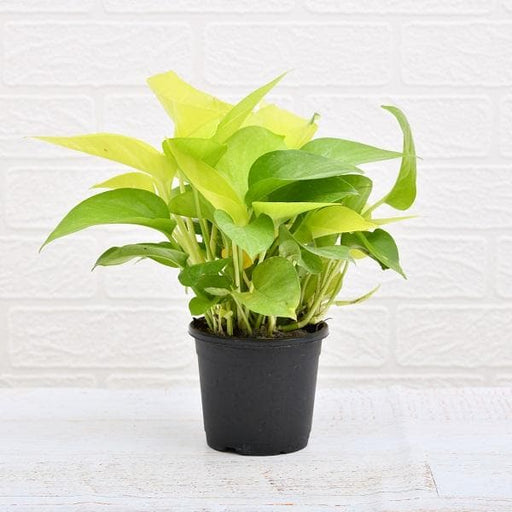 Save 29%
Save 29%
Air Purifier Money Plant with Pot The Air Purifier Money Plant, also known as Pothos or Epipremnum aureum, is a stunning indoor plant that...
View full details
 Save up to 15%
Save up to 15%
Peace Lily, Spathiphyllum - Plant The Peace Lily, scientifically known as Spathiphyllum, is a stunning houseplant celebrated for its elegant white...
View full details
 Save 25%
Save 25%
Jasminum sambac, Mogra, Arabian Jasmine - Plant Jasminum sambac, commonly known as Mogra or Arabian Jasmine, is a fragrant flowering plant...
View full details
 Save 18%
Save 18%
Combo Constituents Includes the Parijat Tree (Night-Flowering Jasmine), a culturally significant plant with fragrant flowers. Description The Pari...
View full details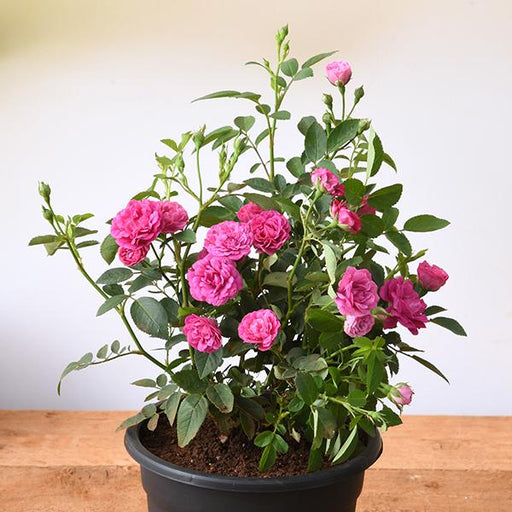
 Save 25%
Save 25%
Miniature Rose, Button Rose (Any Color) - Plant The Miniature Rose, also known as the Button Rose, is a charming and compact flowering plant that ...
View full details Save 25%
Save 25%
Damascus Rose, Scented Rose (Any Color) - Plant The Damascus Rose, also known as Rosa damascena, is a timeless symbol of beauty and romanc...
View full details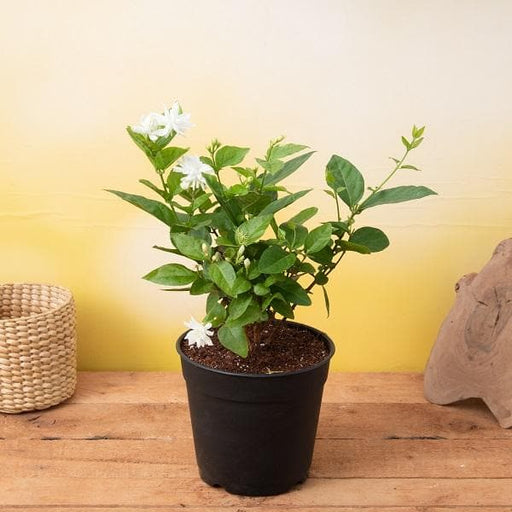
 Save 17%
Save 17%
Beautiful Fragrant Mogra, Arabian Jasmine Plant with Pot The Beautiful Fragrant Mogra, also known as Arabian Jasmine (Jasminum sambac), is...
View full details Save 15%
Save 15%
Pack of Vermicompost and Neem Cake for House Plants Transform your indoor garden with our premium Pack of Vermicompost and Neem Cake, spec...
View full details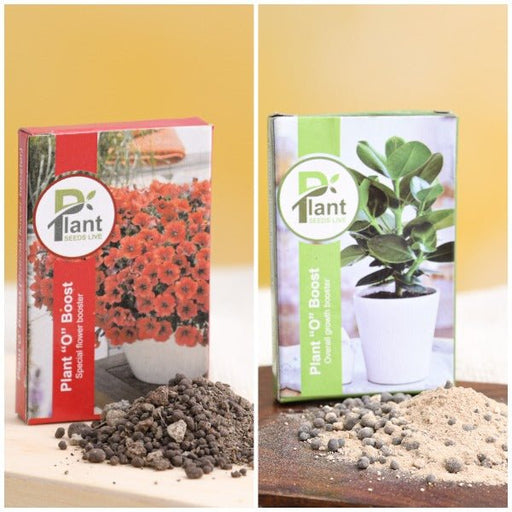
Pack of Plant Growth and Flower Boosters Unlock the full potential of your garden with our Pack of Plant Growth and Flower Boosters! This ...
View full details Save 38%
Save 38%
Combo of Jeevamrut and Neem Raksha for Easy Growth and Protection of Houseplants Transform your indoor garden with our exclusive combo of ...
View full details Save 22%
Save 22%
Plant Nutrients Kit (Pack of 16) for a Healthy Garden Transform your garden into a lush paradise with our Plant Nutrients Kit, featuring 1...
View full details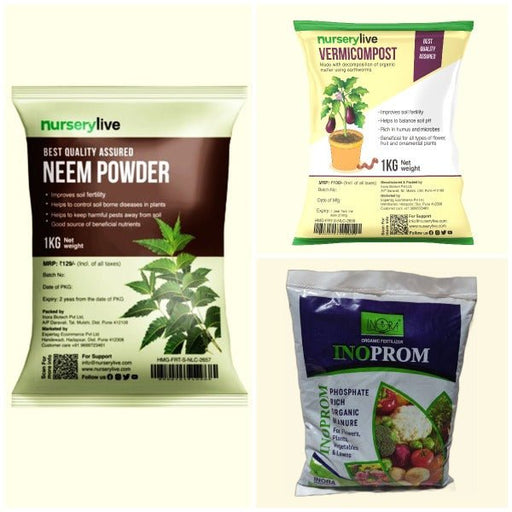 Save 16%
Save 16%
Combo of Top Plant Fertilizers Elevate your gardening game with our exclusive Combo of Top Plant Fertilizers, featuring two bags of premiu...
View full details Save 24%
Save 24%
Pack of 4 Additives to Make Soil Healthy and Nutrient Rich Transform your garden into a thriving ecosystem with our Pack of 4 Additives de...
View full details Save 30%
Save 30%
Transform your gardening experience with our premium Combo of Perlite and Vermiculite. This unique blend is designed to enhance soil aeration and ...
View full details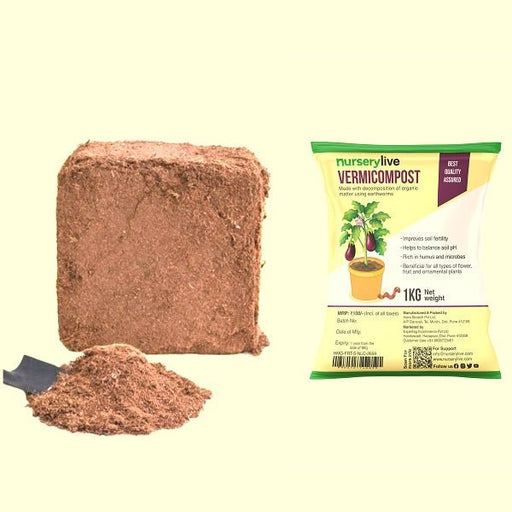 Save 27%
Save 27%
Combo of 2 Vermicompost and Cocopeat - Enrich Your Soil Naturally! Transform your garden into a thriving ecosystem with our Combo of 2 Ver...
View full details
 Save 35%
Save 35%
Best 6 Plants for Perfect Indoor Garden Transform your living space into a lush oasis with our curated collection of the Best 6 Plants for a...
View full details
 Save up to 50%
Save up to 50%
Mini Succulent Garden Pack Transform your space with our Mini Succulent Garden Pack, featuring a delightful collection of 4 any variety beautiful s...
View full details
 Save 30%
Save 30%
5 Best Fragrant Plants Transform your garden or indoor space into a fragrant paradise with our curated selection of the 5 Best Fragrant Plants. Th...
View full details
 Save 24%
Save 24%
Set of 2 Bonsai Looking Grafted Adeniums Transform your indoor or outdoor space with our exquisite Set of 2 Bonsai Looking Grafted Adenium...
View full details Save 45%
Save 45%
Top 4 Die Hard Succulents Pack Transform your indoor or outdoor space with our Top 4 Die Hard Succulents Pack, featuring a curated selecti...
View full details
 Save 30%
Save 30%
5 Best Indoor Plants Pack Transform your living space into a lush oasis with our '5 Best Indoor Plants Pack.' This carefully curated collection fe...
View full details
 Save 25%
Save 25%
Set of 4 Evergreen Air Purifier Plant Pack Transform your indoor space into a lush, green oasis with our Set of 4 Evergreen Air Purifier Pla...
View full details| SrNo | Item Name |
|---|---|
| 1 | Callistemon lanceolatus - Plant |
Callistemon lanceolatus, commonly known as the Narrow-leaved Bottlebrush, is a stunning evergreen shrub native to Australia. This hardy plant is celebrated for its vibrant red flower spikes that bloom in late spring to summer, attracting a variety of pollinators, including bees and birds. With its narrow, lance-shaped leaves and bushy growth habit, it makes an excellent addition to gardens, borders, and as a feature plant.
What makes Callistemon lanceolatus special is its resilience and adaptability to various soil types and climates. This plant not only enhances the aesthetic appeal of your garden but also plays a crucial role in supporting local wildlife. Its striking flowers are not just beautiful; they are also a vital nectar source for pollinators, contributing to biodiversity.
One of the standout features of Callistemon lanceolatus is its ability to thrive in poor soils and withstand drought conditions, making it an eco-friendly choice for sustainable gardening. Additionally, its low maintenance requirements and long flowering period make it a favorite among gardeners looking for vibrant color with minimal effort.
Callistemon lanceolatus plays a significant role in promoting biodiversity by providing food and habitat for various species. Its drought-resistant nature makes it an excellent choice for sustainable landscaping, helping to conserve water resources while enhancing the beauty of the environment.
If you think caring for a plant is as easy as watering a cactus, think again! Callistemon lanceolatus, or the famous bottlebrush tree, requires a bit of TLC. This beauty thrives in well-drained soil and loves a sunny spot. Just remember, it’s not a fan of soggy feet—so no swimming pools for its roots! Regular pruning will keep it looking sharp and encourage those stunning red flowers to bloom. So, roll up your sleeves and get ready to pamper your new leafy friend!
Who knew a plant could be a multitasker? Callistemon lanceolatus not only beautifies your garden but also attracts pollinators like bees and birds. It’s like throwing a party for nature! Plus, its drought-resistant nature means less watering for you—more time to sip lemonade while admiring your green thumb. And let’s not forget its air-purifying abilities; it’s basically a natural air freshener, minus the artificial scents.
If you’re looking for a speedy grower, Callistemon lanceolatus is your plant! This tree can shoot up to 10 feet in just a few years, making it the Usain Bolt of the plant world. With the right conditions, it’ll be towering over your garden in no time. Just be prepared for some serious pruning sessions, as it loves to spread its branches wide. Who knew a plant could have such lofty ambitions?
Want to clone your favorite plant? Callistemon lanceolatus makes it easy! You can propagate this beauty through cuttings or seeds. Just snip a healthy branch, pop it in some soil, and voilà! You’ve got yourself a mini bottlebrush tree. It’s like playing plant god—just don’t forget to give your new offspring the same love and care you shower on the original.
Every plant has its enemies, and Callistemon lanceolatus is no exception. Watch out for pesky pests like aphids and scale insects that might try to crash the party. But fear not! A little neem oil or insecticidal soap can send them packing. Just think of it as a plant bouncer, keeping the riffraff away from your garden’s VIP section.
Callistemon lanceolatus is a bit of a diva when it comes to soil. It prefers well-drained, sandy or loamy soil—no heavy clay, please! Think of it as a plant that enjoys a good spa day, with the right mix of nutrients and drainage. If you want it to thrive, give it the soil it craves, and it will reward you with vibrant blooms and lush foliage.
Get ready for a floral fiesta! Callistemon lanceolatus typically bursts into bloom in spring and summer, showcasing its iconic bottlebrush flowers. These vibrant red spikes are not just a feast for the eyes; they also attract a plethora of pollinators. It’s like hosting a garden gala where the bees and birds are the guests of honor. So, mark your calendar and prepare for a spectacular show!
Looking to jazz up your garden? Callistemon lanceolatus is the perfect candidate for landscaping. Its unique shape and colorful flowers make it a standout feature. Plant it as a focal point, or create a stunning hedge. You can even use it to attract wildlife, turning your garden into a nature sanctuary. With this tree, your garden will be the talk of the neighborhood—just don’t be surprised if your neighbors start asking for cuttings!
This plant is not just a pretty face; it’s tough too! Callistemon lanceolatus thrives in USDA hardiness zones 9 to 11, making it a resilient choice for warmer climates. It can handle a bit of drought and still look fabulous. So, if you live in a sunny area, this tree is your go-to for adding a splash of color without the fuss.
Watering Callistemon lanceolatus is like giving a toddler a bath—too much can lead to a soggy mess! This plant prefers to dry out between waterings, so let it sip slowly. During the hot summer months, it might need a little extra hydration, but don’t drown it! A good rule of thumb is to check the soil; if it’s dry an inch down, it’s time for a drink.
Pruning Callistemon lanceolatus is like giving it a stylish haircut—just the right snip can enhance its beauty! Aim to prune after flowering to encourage new growth and maintain its shape. Don’t be shy; a little trimming goes a long way in keeping this tree looking fabulous. Just remember, it’s not a bush; it’s a tree, so keep those scissors sharp and your vision clear!
Callistemon lanceolatus, also known as the lance-leaved bottlebrush, is a charming shrub native to Australia. With its striking red, bottlebrush-like flowers, it’s like nature’s own fireworks display! This plant not only beautifies your garden but also attracts pollinators, making it a win-win for both aesthetics and the ecosystem.
Caring for Callistemon lanceolatus is as easy as pie! Plant it in well-drained soil and give it full sun. Water it moderately, especially during dry spells. Prune it after flowering to maintain its shape and encourage new growth. Just remember, it thrives on neglect, so don’t smother it with love!
Get ready for a floral fiesta! Callistemon lanceolatus typically blooms in late spring to early summer. Its vibrant red flowers will have your garden looking like a party zone. Just sit back, relax, and enjoy the show as bees and birds join the celebration!
Absolutely! Callistemon lanceolatus is like the superhero of drought tolerance. Once established, it can withstand dry spells like a champ. However, a little water during extreme drought won’t hurt. Just think of it as a refreshing drink after a long day of saving the garden!
Yes, you can! Callistemon lanceolatus is quite the adaptable plant. Just ensure your pot has good drainage and use a quality potting mix. It’s like giving your plant a cozy apartment. Just remember to water it regularly and provide plenty of sunlight for optimal growth!
While Callistemon lanceolatus is generally pest-resistant, it can occasionally attract aphids and scale insects. Think of them as uninvited guests at a party. A gentle spray of insecticidal soap or neem oil can send them packing. Keep your plant happy and pest-free, and it will reward you with stunning blooms!
Yes, indeed! Callistemon lanceolatus is like the beach-loving friend of the plant world. It tolerates salty air and sandy soils, making it perfect for coastal gardens. Just plant it where it can soak up the sun, and watch it thrive like it’s on a permanent vacation!
Callistemon lanceolatus is a speedy grower, reaching heights of 6 to 10 feet in just a few years. It’s like the Usain Bolt of shrubs! With the right conditions, you’ll have a lush, vibrant plant in no time, ready to impress your neighbors and garden visitors alike.
Absolutely! Pruning Callistemon lanceolatus is like giving it a stylish haircut. Do it after flowering to maintain its shape and encourage bushier growth. Just remember to use clean, sharp tools, and don’t go overboard—this plant likes to keep some of its wild charm!
Callistemon lanceolatus prefers well-drained, sandy or loamy soil. Think of it as a plant that enjoys a good spa day—no soggy feet allowed! If your soil is heavy, consider adding sand or organic matter to improve drainage. Your plant will thank you with a spectacular display of blooms!
Yes, Callistemon lanceolatus is like the bouncer at the garden party—deer tend to avoid it! Its tough leaves and aromatic foliage make it less appealing to these four-legged munchers. So, plant it with confidence, knowing your garden will remain a deer-free zone!
You bet! Propagating Callistemon lanceolatus is as easy as pie. You can do it through semi-hardwood cuttings in late summer. Just take a cutting, dip it in rooting hormone, and plant it in a well-draining mix. With a little patience, you’ll have new plants ready to party in your garden!